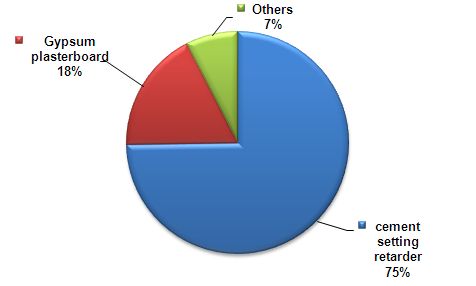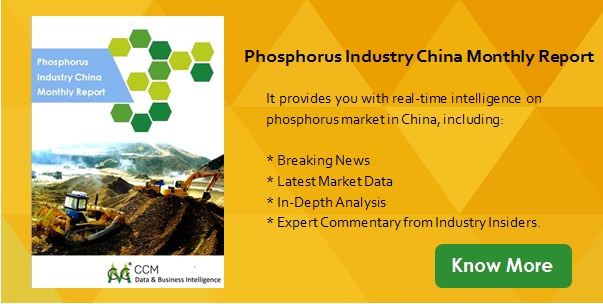China produces a large amount of gypsum as
by-product during industrial production. However, the utilization rate is low.
Solutions to increase the utilization rate include developing new utilization
modes because at present, by-product gypsum is mainly used to produce
construction materials. Also, the concession policy should be expanded to cover
companies that do not possess the capability to further process industrial
by-product gypsum.
China produces a large amount of gypsum as
a by-product during industrial production. The statistics from the Gypsum
Association of China Building Materials Federation (GAC) reveal that about 180
million tonnes of desulfurized gypsum and phosphogypsum are generated by the
thermal power industry, the steel industry and the phosphate fertilizer
industry every year. Desulfurized gypsum and phosphogypsum take up 85% of the
total amount of industrial by-product gypsum. As of the end of 2013,
accumulatively about 400 million tonnes of phosphogypsum and 180 million tonnes
of desulfurized gypsum have built up. This industrial by-product is usually
used to produce cement retarder, plasterboard and other products.
Main applications of gypsum in China

Source: GAC & CCM
It is also worth noting that the average
utilization rate of overall gypsum is under 50%, with phosphogypsum ranking the
bottom. According to GAC's data for 2013, only 27.4% of phosphogypsum was
utilized in 2013.
As CCM has summarized, the following aspects
contribute to the current low utilization rate of gypsum.
Firstly, the government's concession policy
is not extensive. The large number of chemical plants and power plants which do
not have the capability to further process gypsum are unable to access the
value-added tax concession when they simply process gypsum into plaster powder
for selling. As a consequence, they do not have any incentive to recycle the
by-products.
The Catalogue of Resources for
Comprehensive Utilization Entitling Enterprises to Income Tax Preferences
(2008) which came into effect from 1 Jan., 2008 establishes that the income tax
is calculated on the basis of 90% of the total revenue of the year of
production. The income tax applies to the production of bricks (tiles), blocks,
wallboards, gypsum products and commercial fly ashes with more than 70% coal
gangue, fly ash, desulfurized gypsum or phosphogypsum as the raw material.
In addition, according to the relating
stipulations of the Notice about Policies regarding the Value Added Tax on
Products Made through Comprehensive Utilization of Resources and Other
Products, which was jointly issued by the Ministry of Finance and State
Administration of Taxation in 2008, selling specified construction products
made from raw materials with at least 30% waste residues including
phosphogypsum and sulfurgypsum can enjoy the exemption to the value-added tax
payment. Cement clinkers produced with rotary kiln technology and raw materials
that contain no less than 30% waste residues including phosphogypsum and
sulfurgypsum can enjoy the immediate value-added tax refund policy. Finally,
new wall materials including gypsum blocks, hollow core slabs and plasterboards
which are made from phosphogypsum can enjoy the immediate 50% value-added tax
refund policy.
Secondly, the increases to the treatment
cost places gypsum in a disadvantageous position in the market. Yang Zaiying,
the Secretary General of GAC, says that by-product gypsum, especially
phosphogypsum, contains deleterious substances like sulphur and fluorine, which
needs pre-processing for the development of high quality new construction
materials. Its comprehensive utilization requires a large amount of technical
transformation capital from enterprises, and this raised the cost of gypsum
utilization indirectly. Besides, although the production of phosphogypsum in
Hubei, Yunnan, Guizhou, Shandong and Anhui provinces occupied 78% of the total
production volume in China, the companies which are located in Yunnan Province
or Guizhou Province are quite remote and are far away from their consumer
markets, resulting in a continuously low gypsum comprehensive utilization rate.
Thirdly, the current narrow utilization
range of gypsum is another negative factor. In terms of the utilization of
industrial by-product gypsum, the gypsum product that people are familiar with
is only useful for low price construction materials such as construction used
plaster powder, plasterboards or gypsum blocks. However, large enterprises
avoid these materials because of the low profits. In contrast, gypsum mold is a
profitable gypsum product, but only a limited amount is used. However, it has
attracted an increasing number of manufacturers, leading to a severe
duplication of products and gradual market saturation.

CCM believes that focus should be on the
following aspects in order to improve the utilization of industrial by-product
gypsum.
It is important to maintain the current
utilization mode and to develop new modes. The Secretary General of GAC, Yang
Zaiing, once said the demand for gypsum had been rising with the increasing
production amount of cement in China. The rapid development of real estate
results in the increasing demand for construction materials including cement,
gypsum and ceramics. President Tang of Jiangsu Efful New Material Science and
Technology Co., Ltd. indicated that 80% of American residences used gypsum
products as partition materials, and gypsum blocks took up over 40% of the
inner wall market in western European countries like Germany and France. Thus,
there are promising prospects for industrial by-product gypsum utilization in
China.
Currently, the utilization of industrial
by-product gypsum is still relatively onefold, with focus being laid on
construction materials. New utilization modes therefore need to be developed.
Professor Ying of No.1 Industrial Design Institute of Jiangsu Province pointed
out that the utilization of gypsum should move beyond the existing mode of
"gypsum equals to construction material" and new technologies need to
be adopted to improve the utilization of industrial by-product gypsum. New
modes and technologies are necessary to achieve larger profits and the large
scale utilization and industrial development of by-product gypsum. Examples of
new modes include the production of high value-added chemical products such as
gypsum whiskers.
Another step is to expand the concession
range covered by the government's policy. The current concession policy
excludes many companies that have no capability to further process industrial
by-product gypsum. These companies have little choice but to abandon the
utilization of industrial by-product gypsum because of the higher production
costs.
Director Wang of Technology Committee of
the National Environmental Protection and Resourceful Utilization of Industrial
By-product Gypsum Program Technology (Nanjing) Center indicated that
restrictions on the mining of natural gypsum needed to be imposed in accordance
with the law in extensive production regions of industrial by-product gypsum.
Also, the costs of natural gypsum mining and the build up of industrial
by-product gypsum must be increased in order to improve the recycling of
industrial by-product gypsum.
About CCM:
CCM is the leading market intelligence
provider for China’s agriculture, chemicals, food & ingredients and life
science markets. Founded in 2001, CCM offers a range of data and content
solutions, from price and trade data to industry newsletters and customized
market research reports. Our clients include Monsanto, DuPont, Shell, Bayer,
and Syngenta. CCM is a brand of Kcomber Inc.
For more information about CCM, please
visit www.cnchemicals.com or get in
touch with us directly by emailing econtact@cnchemicals.com or calling +86-20-37616606.